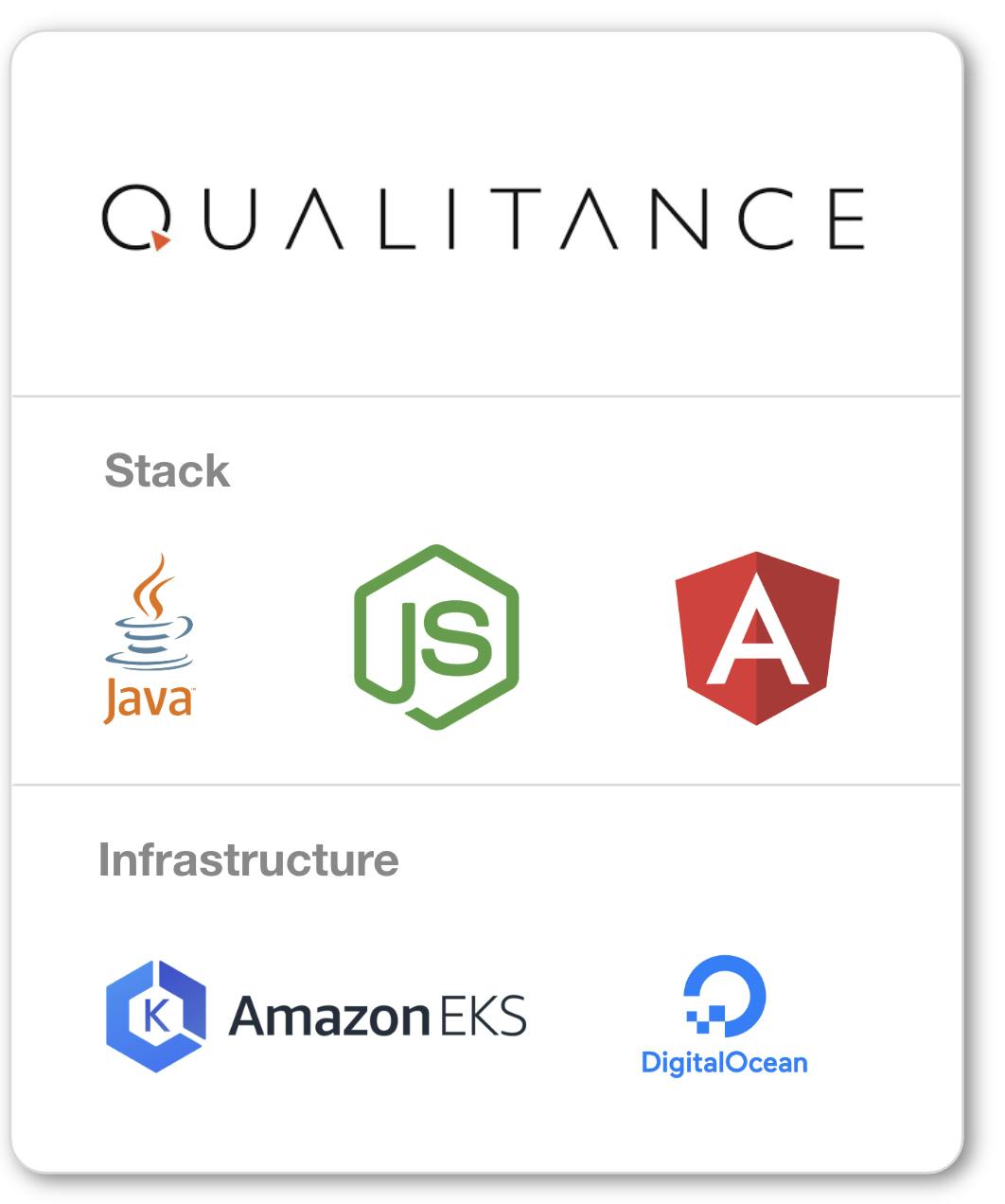Oualitance Case Study
Simplifies Sandbox Cloud Deployments for Developers and QA with Bunnyshell Environments-as-a-Service
Qualitance, a leading technology consulting and software development company, faced challenges in juggling internal DevOps resources to provision infrastructure for new projects or troubleshoot deployments for existing ones.

COMPANY
Qualitance, a prominent technology consulting and software development firm based in Bucharest, Romania, is renowned for creating user-centric applications like BCR Casa Mea.
Their client portfolio includes high-profile companies such as BCR, Raiffeisen, Allianz, and numerous startups.
Their technical team, comprising over 60 engineers, 30 full-time developers, and more than 200 subcontractors, specializes in delivering AWS Certified solutions.
HEADQUARTERS
Bucharest, ROMANIA
FOUNDED
2007
TEAM SIZE
60 Software Engineers
Challenge
The primary challenge for Qualitance's CTO, Radu, was efficiently managing internal DevOps resources. These resources were crucial for setting up deployment pipelines, provisioning infrastructure for new projects, and troubleshooting deployments for existing ones. The process was particularly cumbersome for new projects, where developers had to wait for a DevOps engineer to translate their local DockerCompose into a deployable format for Kubernetes or other container-based infrastructure.
For ongoing projects, any changes or additions to the stack required the intervention of a DevOps engineer. Even with Infrastructure as Code (IaC), setting up environments for each project was a manual, time-consuming task. Moreover, the lack of automatically replicable environments led to sequential User Acceptance Testing (UAT) on a branch-by-branch basis, creating bottlenecks and risks when multiple branches were merged and tested together.
Developers are looking for convenience, including myself, they’re familiar with DockerCompose and expect someone to translate and deploy their YAML to the cloud or they have a tool that could easily push local changes to a live environment. They’re not going to rush to learn cloud or Kubernetes.
Solution
Radu found the solution in Bunnyshell, an Environment-as-a-Service platform. After testing Bunnyshell with an internal DockerCompose-based project, he realized the potential of empowering his developers and QA team to deploy their local development changes to a live, cloud environment without the need for a DevOps engineer.
The engineering teams at Qualitance found Bunnyshell's environment definition to be intuitive and straightforward. They chose DigitalOcean’s managed Kubernetes to power their sandbox environments, considering it the best value for pre-production workloads.
To streamline the deployment process, Qualitance’s DevOps team leveraged Bunnyshell’s Templates to define their most common environment stacks, enabling developers to easily deploy new projects to the cloud.
“Build once, use every time”
Testing should happen before the pull request is merged as with bunnyshell ephemeral environments, otherwise it will create chaos in the release branch or staging.
Results
Adopting Bunnyshell led to significant time and cost savings for Qualitance’s engineering team. DevOps engineers could now focus on highly custom work related to client and production needs. Developers could instantly see their changes live without waiting for a DevOps engineer to provision infrastructure and set up pipelines.
The QA teams could self-serve UAT environments and test branches in parallel, eliminating the limitations of shared environments.
Bunnyshell helps a lot because my team can deploy their docker-compose based project in the cloud very easily and unlock an isolated, temporary environment for whatever purpose that would otherwise block the process
A QA environment should be controlled by the tester, not by the developer. That means they do their own deployments, because when the dev is pushing changes or creating a pull request to a branch/environment it might interfere with the ongoing testing and break it. So as a team lead I want a “dev” cloud environment so I can see at all times that everything is functional on the release branch and also separate QA environments so testers can test at the same time multiple features, on different branches.
Start with a free account
Join over 2,000+ developers already building faster with Bunnyshell.
Get startedFrequently asked questions
Everything you need to know about the product and billing.
Still have questions?
Can't find the answer you're looking for? Please chat to our friendly team.
Get in touch